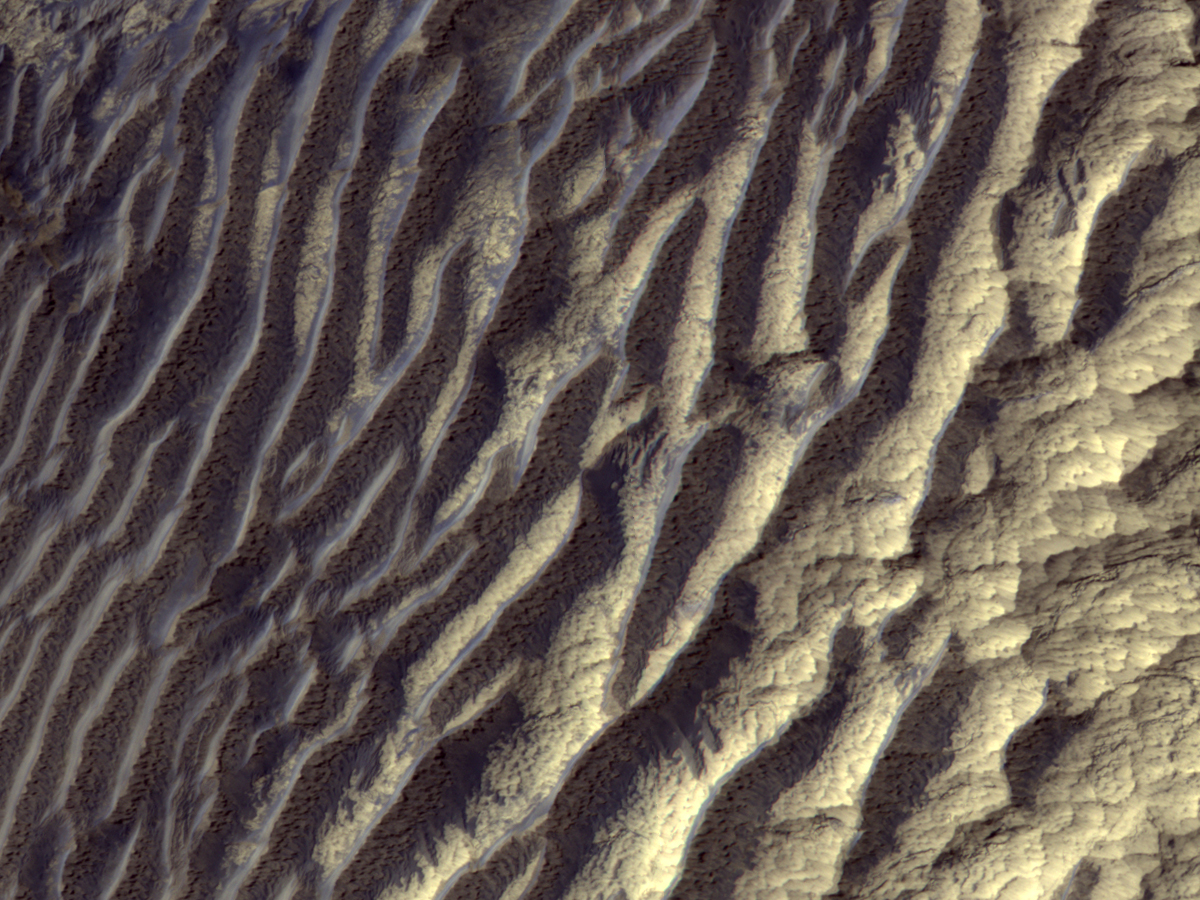Uniquely martian

Nooks and crannies
April 4, 2014
Big ripples near Opportunity
April 28, 2014 A piece of Mars: Now here’s something that, as far as I know, can safely be labeled as “uniquely martian”. These dunes (or maybe they’re ripples) are ~25 m wide, and have formed from winds blowing from the upper left. Their upwind sides are smoothed by constant erosion from incident sand-laden winds, but their downwind sides are as bumpy as the surrounding surface. What makes this bumpy texture? (ESP_035305_1740, NASA/JPL/Univ. of Arizona)
A piece of Mars: Now here’s something that, as far as I know, can safely be labeled as “uniquely martian”. These dunes (or maybe they’re ripples) are ~25 m wide, and have formed from winds blowing from the upper left. Their upwind sides are smoothed by constant erosion from incident sand-laden winds, but their downwind sides are as bumpy as the surrounding surface. What makes this bumpy texture? (ESP_035305_1740, NASA/JPL/Univ. of Arizona)




2 Comments
I guess I don’t understand what I’m seeing. If the wind is from the upper left, I see the downwind sides of the ridges as smooth and the upwind sides as rough. Does Mars’ lighter and compositionally different atmosphere / wind behave differently than earth’s when moving up or down slope? Does it warm or cool the same? Could it cause the fine dust particles to clump together as it rises?
Maybe you have the image inverted (a common problem). The sun is shining from the left. The smooth sides of the ripples/dunes are sunlit, and they rise to the lower right to meet the ridge peaks. The surface underlying the ridges is the creamy colored material.
To first order, wind works the same on Mars and Earth. Large-scale flows are driven by differential heating between the equator and poles, as well as by the planet’s rotation. Smaller-scale flows are strongly influenced by topography on Mars, and tend to dominate over weather patterns where the topographic relief is strong. The smaller particles do clump together, but that may not play a role in how these dunes/ripples formed.